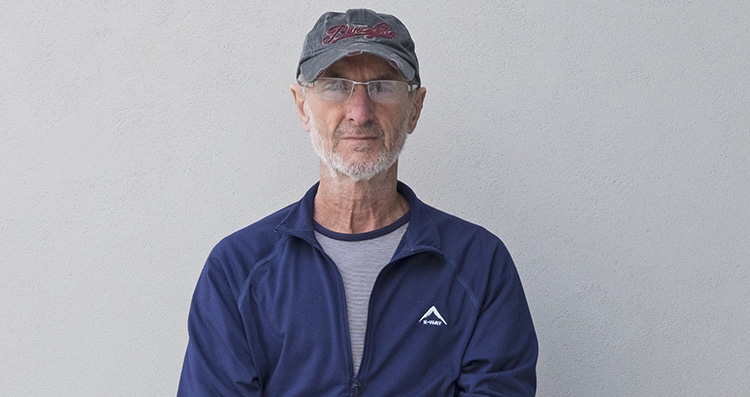My journey down the path with breast cancer began one Sunday evening while watching TV. I had an itch on my chest and subconsciously scratched it. The sensation I felt was unusual and prompted me to take a look. What I found was a lump the size of a marble right behind my left nipple.
The following day I paid a visit to my doctor who is a good friend of mine. Even though he was not overly concerned, he felt it should be checked out and he arranged for me to have a fine-needle aspiration. The pathology was inconclusive but indicated some atypical cells and he recommended I see a breast surgeon. The surgeon wanted me to have a follow up biopsy (a biopsy obtains a much larger tissue sample than a fine needle aspiration) to confirm the presence or otherwise of cancer cells. She explained if there were no cancer cells present then she would only remove the lump (a lumpectomy) and if there were cancer cells, she would perform a mastectomy. The operation was scheduled for the following week.
Two days later my doctor phoned to tell me that cancer cells had been found. I remember feeling numb and in a state of shock. I wondered just how long the lump had been there and why I had never found it while having a shower? Interestingly, my doctor later acknowledged that in his 35 years of practice, I was the first male he had ever diagnosed with breast cancer. He added he was now also checking the breasts of every male patient who came to see him.
I tried to mentally prepare myself for what I was about to face. My surgeon had given me a number of brochures/booklets about breast cancer and suggested I read them before the operation (only one of the brochures related to male breast cancer). I found myself having to deal with an illness that came with a whole new vocabulary, words I had never heard before.
The week I was in the hospital, I was comforted by family and friends who rallied by my side for support. However, when I got home, I was overwhelmed by a sadness that I struggled to cope with. In desperation I reached out to the Cancer Council of Australia and was assigned a counselor.
I so badly needed this help. The woman counselor also suggested I think about joining a group therapy session, which I did. The group met once a week and consisted of eight women, mainly breast cancer survivors. At my first meeting I was introduced to the group and each briefly explained their own reasons for being in therapy. When it was my turn to tell my story I noticed the intense concentration on the faces of the group members as I spoke. For the first time since my diagnosis, I felt such relief to be understood (in a way that my friends and family had not been able to do) and to have others ‘walk’ with me through the dark tunnel of cancer.
While I knew that my mother had breast cancer, it was sometime later I found out my mother’s sister and mother’s mother also had the illness. My niece had also been diagnosed with breast cancer just three years after me. Because of the family history of breast cancer, I was advised by my doctor to go for genetic testing. The tests failed to find any known genetic mutation that causes breast cancer. My mother and niece also tested negative for the BRCA gene mutation.
Two years after my diagnosis I discovered a lump on the side of my body. The anxiety that I thought I had left behind re-emerged with a vengeance. A scan showed the lump to be benign. While indescribably relieved, I also realized that the fear of my illness returning would never go away entirely.
Some months later two cousins (one a professional photographer and the other a university fine arts lecturer) decided to have a ‘family’ exhibition at an art gallery in Toronto and invited me to join them. The photos I selected for the exhibition all related to my breast cancer journey. Each photo (landscapes, portraits and animals in the wild) spoke to me both as a photographer and a breast cancer survivor. In the exhibition, each framed photo had a description underneath relating the image to my breast cancer journey. Many visitors to the exhibition came to chat. Some wanted to know about male breast cancer while others just wanted to share their own or a loved one’s cancer experience.
The success of this exhibition prompted me to contact the Breast Cancer Network of Australia (BCNA) about rerunning the exhibition in Melbourne. A year later, my photos were on display in the foyer of a large city building for five days. Hundreds of people passed through the foyer each day.
I’m 67 now and five years cancer free. I am off Tamoxifen and see my oncologist twice a year. Life is a new normal. Although I wish I never had this illness, it has taught me a lot about myself and much about life. I look at each day as a gift and I try live life to the fullest. I have learned to be courageous, to take more risks and to live well.
I’m grateful for all of the amazing people I have met along this journey and feel I have come out the other side a much better person.

